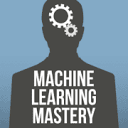In the field of scientific research, “time-consuming literature search, fragmentation of tools, and difficulty in closing the loop of experimental data” have always been the pain points of researchers – quantum computing researchers need to spend days sifting through the latest literature on ion trapping and superconducting architectures, and drug development teams have to repeatedly switch between multiple molecular dynamics tools. molecular dynamics tools, astronomers analyzing exoplanet data are difficult to quickly correlate observation equipment and simulation results. SciMaster, jointly launched by SJTU and SZTech, is positioned as a “universal scientific research agent”, through “multimodal search – intelligent tool call – closed-loop experimental ecology – in-depth research and development”, and “multi-modal search”. Through the whole process of “multimodal search – intelligent tool invocation – closed-loop experimental ecology – in-depth report generation”, SciMaster compresses the scientific research preparations that would otherwise take several weeks to the minute level, and provides “efficient, accurate and interoperable” scientific research for quantum computation, drug research and development, astronomy and other fields. It provides “efficient, accurate, and interventable” scientific research support for many fields such as quantum computing, drug discovery, and astronomy, redefining the boundaries of scientific research efficiency.
The most revolutionary value of SciMaster is that it breaks the inherent pattern of “scattered tools and fragmented process” in traditional scientific research, and lets the scientific research work transform from “human-intensive” to “
AI-collaborative” by virtue of three core advantages. The most revolutionary value of MiMaster is that it breaks the inherent mode of traditional scientific research “scattered tools and fragmented process”.
The foundation of scientific research is high-quality literature and data. SciMaster builds a multimodal search system of “WebSearch+WebParse+PaperSearch”, which covers “Internet Information + Academic Literature + Patent Data”, solving the problem of “difficult to find information, comprehensive and inaccurate”. SciMaster builds up a whole-domain information network covering “Internet information + academic literature + patent data” through “WebSearch+WebParse+PaperSearch” multimodal search system, which solves the problem of “difficult, incomplete, and inaccurate to find information”. For example, when researching the application of two-dimensional material MXene in electronic devices, PaperSearch can accurately locate the most highly cited papers in the past 5 years among 170 million academic documents, WebSearch can capture the cutting-edge information in the industry (e.g., the latest progress in the R&D of MXene devices by a certain enterprise), and WebParse can automatically parse the web pages and patent data to find the most relevant information in the industry. WebParse automatically parses key data (e.g., MXene conductivity, preparation process parameters) from web pages and literature, and categorizes them by “research status – technology bottlenecks – future direction”. What’s more, the search process is visible in real time, and researchers can pause at any time to view the intermediate results. If they find that a certain type of literature is missing, they can manually add keywords (e.g., “MXene Flexible Electronic Devices Stability”), and the system will immediately adjust the search strategy to ensure that the information coverage is comprehensive. This search capability allows researchers to obtain the core information of a certain field within 10 minutes without switching between multiple platforms such as Zhi.com, Web of Science, Google Scholar, etc., which significantly saves the time of information collection.
In traditional scientific research preparation, “literature review writing” often takes weeks and is prone to the dilemma of “only listing but not analyzing”, while SciMaster can generate “expert-level” scientific research reports based on the retrieved information, not only integrating data but also refining core insights. SciMaster can generate “expert-level” research reports based on the information retrieved, not only integrating data, but also refining core insights. For example, if you input “Typical process of molecular dynamics in drug screening”, the system will first break it down into 5 sub-tasks: “target protein selection – small molecule library construction – molecular docking – kinetic simulation – result analysis”, and then based on the literature and data, it will generate a report with the following information Based on the literature and data, the system generates a detailed report containing “key tools for each step (e.g., AutoDock Vina for molecular docking), common problems (e.g., solutions to deviations in protein structure prediction), and the latest optimization methods (e.g., AI-accelerated simulation algorithms)”, with links to all the references and core graphs (e.g. “Drug-target binding energy curves for different simulation durations”). The report can be exported in PDF or Word format and can be used directly as a literature review for research papers. It can be exported to PDF or Word format, which can be directly used as a literature review for research papers or background materials for project application. After a drug R&D team used SciMaster, the writing time of the literature review was shortened from 2 weeks to 1 day, and the citation accuracy and depth of analysis of the report were recognized by peers.
In traditional scientific research, “data analysis” and “experimental operation” are often in a state of separation – the simulation results generated by AI need to be manually imported into the laboratory equipment, and the experimental data need to be re-uploaded to the analysis tool, which is a cumbersome and error-prone process. SciMaster realizes the seamless closed loop of “software analysis – hardware experiment – data feedback” by connecting to Uni-Lab’s MCP service, building a complete research ecosystem of “researcher + AI + instrument + data”. ” to build a complete research ecosystem including “researcher + AI + instrument + data”. For example, in quantum computing research, after the researcher generates the “Ion Well Quantum Bit Stability Optimization Scheme” through SciMaster, the system can directly call the quantum measurement and control equipment in the lab to automatically execute the optimization experiment; after the experiment is completed, the equipment data is transmitted back to SciMaster in real time, and the AI further analyzes the deviation of the experiment results from the simulated data. After the experiment is completed, the device data is sent back to SciMaster in real time, and the AI further analyzes the deviation between the experimental results and the simulated data, and generates the “optimization scheme iteration suggestion”. This “wet and dry closed-loop” capability allows quantum computing, materials science and other fields that rely on experimental verification to avoid the problem of “disconnecting simulation and experiment” and accelerate the transformation of scientific research results. At present, SciMaster has docked with mass spectrometers, quantum measurement and control systems, and molecular simulation workstations in many university laboratories, supporting the automation of the whole process from “theoretical simulation” to “experimental verification”.
SciMaster is designed around the “whole process of scientific research”, and each module precisely matches the actual needs of researchers, supporting “AI autonomous execution” and allowing “real-time human intervention”, balancing efficiency and flexibility. SciMaster supports “AI autonomous execution” and allows “real-time human intervention”, balancing efficiency and flexibility.
SciMaster integrates specialized tools for quantum computation simulation, molecular dynamics, astronomical data processing, etc., and provides two modes of “active invocation” and “automatic invocation” to meet the needs of different scientific research scenarios. For example, when researching “exoplanet detection technology routes”, the system will automatically invoke the “Astronomical Data Visualization Tool” (to generate a comparative chart of the number of planets discovered by different detection technologies) and the “Literature Measurement Analysis Tool” (to analyze the number of planets discovered by each technology route). “(to analyze the change of research heat of each technology route); if researchers need more accurate simulation, they can take the initiative to input the command “Use the exoplanet radial velocity simulation tool to analyze the spectral data of a certain star”, and the system will immediately call the corresponding tool and output the simulation results (e.g., planetary mass, orbital period prediction). The tool library also supports “dynamic updating”, and DeepSense will regularly add new tools (e.g., “AI-assisted quantum bit error correction tool” to be added in 2025) according to new advances in the scientific research field, to ensure that it is adapted to the needs of cutting-edge scientific research.
Different from the “black box output” of ordinary AI tools, SciMaster allows researchers to “intervene in the thinking process of AI” and ensure that the direction of scientific research is in line with expectations through the “thought chain editing” function. The research direction is as expected. For example, after inputting “bottlenecks in the development of quantum computing architectures”, the system will automatically break it down into four sub-tasks: “bottlenecks in ion trap architecture – bottlenecks in superconducting architecture – comparisons of other architectures – outlook for solutions”. If the researcher thinks that “Comparison of other architectures” is not a priority, he/she can click “Pause” to enter the thought chain editing interface, delete the sub-task and upgrade the priority of “Superconducting architecture bottleneck”. If a keyword (e.g., “quantum decoherence solution”) is missing from the system, it can be manually added to the search task, and the system will immediately adjust the execution order. This “intervenable” feature makes AI no longer a “one-way output tool” but a “communicable and adjustable” scientific research partner, so as to avoid the direction deviation caused by AI’s understanding bias. This “intervenable” feature makes AI not a “one-way output tool” but a “communicable and adjustable” research partner, avoiding the deviation of direction due to the bias of AI understanding.
Complex data are often involved in scientific research (e.g. trajectory data of molecular dynamics simulation, error rate changes of quantum computation), SciMaster transforms abstract data into intuitive content through charts and data visualization. For example, when analyzing “the relationship between the conductivity of MXene material and temperature”, the system will automatically generate line graphs and mark key inflection points (e.g., “the conductivity decreases by 20% after the temperature exceeds 300K”); when studying the “cooperative learning mechanism of intelligences”, SciMaster will automatically generate line graphs and mark key inflection points (e.g., “the conductivity decreases by 20% after the temperature exceeds 300K”). When studying the “Cooperative Learning Mechanism of Intelligent Bodies”, we use heat maps to show the difference in the collaborative efficiency of intelligent bodies under different evolutionary algorithms. These visualization charts are not only embedded in the report, but also support manual adjustment (e.g., modifying the range of axes, changing the type of charts), which makes it convenient for researchers to use them directly in their papers or reports. After an astronomy team used SciMaster, the analysis efficiency of exoplanet detection data was improved by 60%, and the visualization charts quickly discovered the “planetary orbital distribution pattern of a certain type of star”, which provided key clues for subsequent research.
The professional ability of SciMaster comes from the accumulation of scientific research resources of SJTU and the AI technology strength of SZTech. The joint research and development of the two organizations ensures the professionalism and reliability of SciMaster in multi-disciplinary scientific research scenarios.
As a top university in China, SJTU has profound scientific research accumulation in quantum computing, material science, drug research and development, etc. The functional design of SciMaster deeply integrates the actual needs of these fields. For example, in the “Quantum Computing Bottleneck Research” module, the system integrates the latest research results of the Quantum Information Laboratory of SJTU (e.g., decoherence suppression method for certain types of ion trap quantum bits) to ensure that the technical analysis and solutions in the report have academic rigor; in the “2D Materials Research” module, the reference to the materials science of SJTU is used. “, we refer to the MXene preparation process data from the School of Materials of SJTU to make the simulation results closer to the experimental reality. With this background of “combining industry, academia and research”, the reports and tools generated by SciMaster not only have the efficiency of AI, but also have the authority of academic institutions, avoiding the problem of “AI-generated content being detached from the actual scientific research”.
DeepSense’s technology accumulation in the field of AI for Science provides core support for SciMaster’s “multimodal search”, “tool synergy”, and “experimental closed loop”. The AI models developed by SciMaster provide core support. Its self-developed AI model has the ability of “long text comprehension + cross-domain reasoning”, which can accurately dismantle complex scientific research problems such as “quantum computing architecture bottleneck analysis”; at the level of tool invocation, it ensures that multiple tools (e.g. literature retrieval) can be used to solve the problems through “intelligent scheduling algorithms”, and “intelligent scheduling algorithm”. At the tool invocation level, the “intelligent scheduling algorithm” ensures that multiple tools (e.g., literature search tools, simulation tools, visualization tools) do not conflict when they work together, thus improving the efficiency of task execution; when docking laboratory equipment, the standardized interface based on MCP services realizes the low-latency transmission of “AI commands – equipment operation – data feedback” to ensure the stability of the experimental ecosystem. This guarantees the stability of the experimental ecosystem. These technical capabilities enable SciMaster to maintain high efficiency and precision when dealing with multidisciplinary and high-complexity scientific research tasks.
With “full-process capability + multi-domain adaptation”, SciMaster has been applied in many fields such as quantum computing, drug development, astronomy, material science, etc., providing targeted solutions for researchers.
In quantum computing research, “architecture selection” and “error suppression” are the core problems. SciMaster can help researchers quickly sort out the bottlenecks of mainstream architectures such as “ion trap, superconducting, optical quantum” (e.g., short decoherence time of superconducting quantum bits, insufficient scalability of ion trap), and generate “comparison of error suppression schemes” (e.g., surface code vs. quantum error-correcting code) based on the latest literature. If experimental verification is needed, the system can also call quantum measurement and control equipment to simulate the error correction effect of different schemes, providing data support for researchers to choose the optimal technology route. After using SciMaster, a quantum computing lab shortened its architecture research time from one month to one week, and successfully improved the coherence time of quantum bits by 15% based on the solution provided by the system.
In drug screening, molecular dynamics simulation is the key to understanding drug-target interactions, but traditional simulation often takes days or even weeks.SciMaster’s integrated molecular dynamics tools, combined with AI-accelerated algorithms, can shorten the simulation cycle to hours. For example, if you type “screen small molecules against a tumor target”, the system will first obtain the known inhibitor structure of the target through PaperSearch, then call the molecular docking tool to screen the small molecule library, and finally use molecular dynamics simulation to analyze the “drug-target complex stability”, generating a molecular dynamics simulation that includes “drug-target interaction”, and “drug-target interaction”, which is the key to the target interaction. “Finally, the stability of the drug-target complex is analyzed by molecular dynamics simulation, generating a detailed report containing “binding energy, number of hydrogen bonds, and conformational changes”. After a pharmaceutical company used SciMaster, the efficiency of drug candidate screening increased by 3 times, which greatly accelerated the process of new drug development.
When astronomers study exoplanets, they need to deal with massive observational data (e.g. spectral data, transiting curves) and correlate the results of different detection techniques (radial velocity method, transiting method, microgravity lensing method.) SciMaster can automatically analyze these data to generate “the number of planets found by each technical route, mass distribution, orbital properties SciMaster can automatically analyze these data to generate statistical charts of “number of planets discovered by each technical route, mass distribution, orbital characteristics”, and also predict the probability of finding planets around certain types of stars based on the literature. For example, if you input “analyze the exoplanet detection results of M-type stars”, the system will quickly locate the relevant observation papers, extract key data (such as orbital period of discovered planets, location of habitable zones), and generate a visual report to help researchers quickly grasp the current status of the research in this field.
In the research of 2D materials (e.g. MXene, graphene), SciMaster can provide full-process support from “literature research” to “experimental verification”. For example, when researching the application of MXene in flexible electronic devices, the system first searches the latest literature to summarize the preparation process and performance parameters of MXene, then calls the material simulation tool to predict the conductive stability of MXene devices, and finally connects to the laboratory’s thin film preparation equipment, generates and executes the experimental plan, and then sends the data back to the AI for further support. After the data is returned, the AI further optimizes the simulation model. This “theory-simulation-experiment” closed-loop approach has dramatically increased the iterative speed of materials research. With the help of SciMaster, a materials team from a university completed a MXene device stability study that would have taken half a year in just two months.
The emergence of SciMaster is not only the innovation of a scientific research tool, but also a new exploration of “AI + Scientific Research” integration – through the scientific research resources of SJTU and the AI technology of SZTech, it disassembles the complicated scientific research process into “Through the research resources of SJTU and the AI technology of Shenzhen Technology, it disassembles the complex scientific research process into steps that can be automated, intervened, and collaborated, so that researchers can liberate themselves from cumbersome literature search and tool invocation, and focus on the core work of “proposing innovative problems, designing experimental programs, and refining core results”.
In the future, SciMaster is expected to further expand its application areas (e.g. nuclear fusion research, brain science data analysis) and deepen its cooperation with more universities and scientific research institutions, accessing more laboratory equipment and specialized tools, and building a more complete scientific research ecosystem. For researchers, SciMaster is not only an “assistant” to improve efficiency, but also a “partner” to promote scientific research and innovation; for the industry, it has created a new model of “joint research and development of scientific research AI by industry, academia and research institutes. ” new model, providing replicable experience for the development of the AI for Science field. At a time when competition in scientific research is becoming increasingly fierce, SciMaster is helping more researchers break through the bottleneck of efficiency, accelerating the output and transformation of scientific research results, and injecting new kinetic energy into scientific and technological progress with its ability of “high efficiency, precision, and professionalism”.









